Pema Shedrup Dhargye Khandroling Nunnery, Dangchu
Pema Shedrup Dhargye Khandroling Nunnery, Dangchu

The sacred place of Dangchu Zhabje Lhakhang lies in the midst of woods and meadows fenced by undulating hills. It is located in a pristine environment away from the hustling life of modern life; the only life that is seen is the environmental life, often taking the visitors to newer heights of ecstasy.
Spotting wildlife is not uncommon with a bountiful breeze gushing through the serene valleys, and often nature fanatics dissolve in the fantasy of unimaginable happiness.

In the eighth century, when Guru Padmasambava visited Bhutan, it’s believed that Guru spent some time meditating in the place above the existing temple known as Ugyen Phug. While meditating, the devotees of the village requested that Guru bless them with a perennial source of water, as the people were suffering from an acute shortage of drinking water. Guru warmly consented to the request and established a permanent source of water, which is visibly seen today and is commonly known as Zhabje Drubchu.

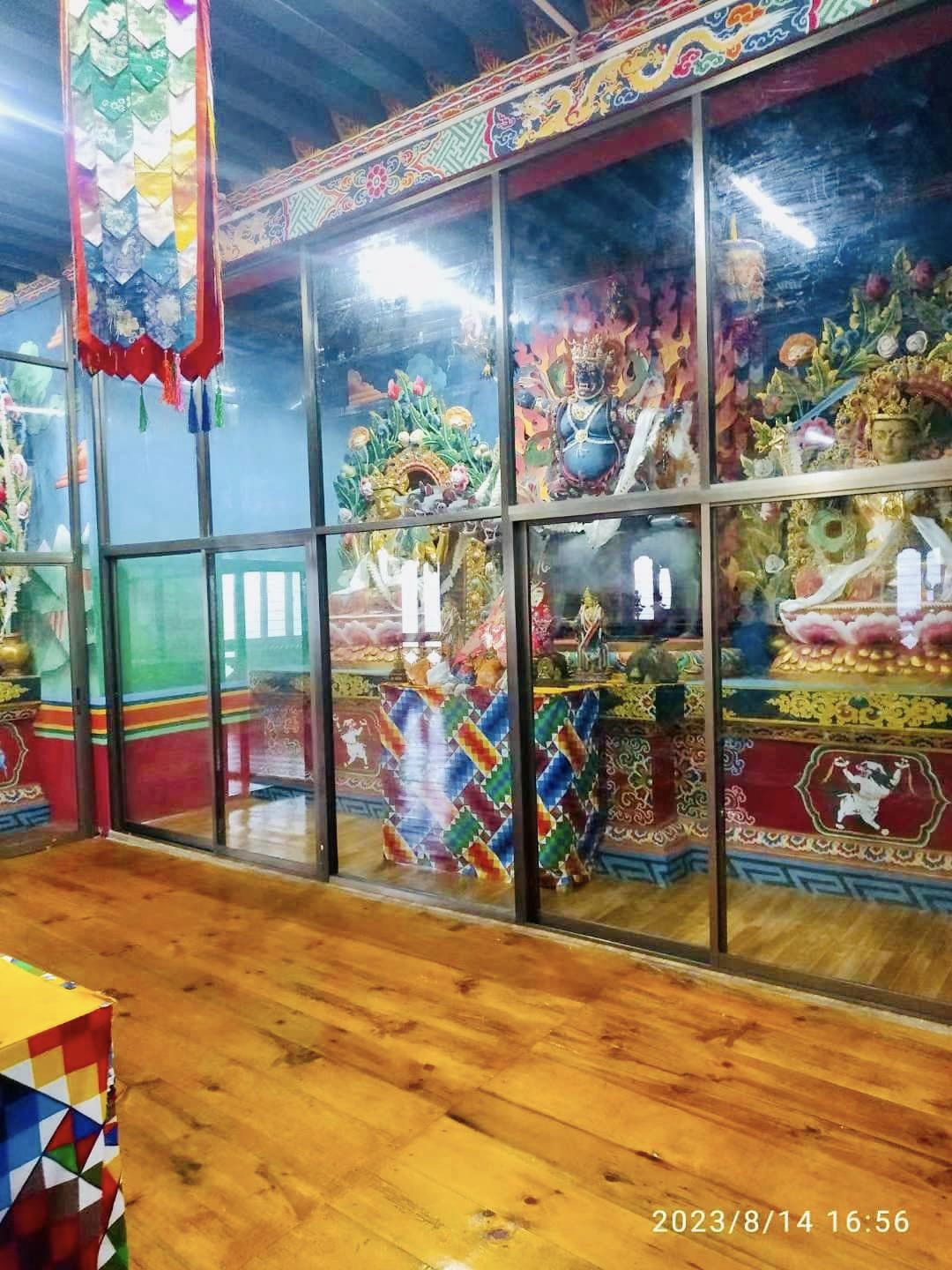
However, the water didn’t reach the village; like a miracle, the water evaporated on the way. This unusual scenario had startled the people and the Guru. To learn the evil cause, Padmasambava made it to the source, and to his surprise, he saw a demon couple diverting the water in the other direction. Guru then chased the demon till he got hold of one of the couple demons—a female demon—at Zhabje (the present location of Zhabje Lhakhang). Guru then subdued the female demon using the dagger, penetrating the dagger through the shoulder and ultimately turning the demon into a rock. Even today, we can clearly see the sight of the rock and its dagger inside the temple of Zhabje lhakhang.
As a gift to the people of the present and future, Guru implanted his walking stick beside the temple, and later a cypress tree was grown from the walking stick. Over the years, the devotees started to use the bark of the tree as sacred medicine and spiritual means, which weakened the life of the tree. Today, we can see the old cypress on the verge of dying.
After subduing the female demon, Guru then followed the male demon, whom he followed until he reached the place called Tangra. There, he subdued the male demon too by dissecting the demon’s body into four slices.
Above Zhabje Lhakhang in the southwest direction, about ten minutes walking distance away, lies a cave called Ugyen Bjaphug. As per the oral tradition, it’s believed that Guru meditated for three long months in the cave, and at the edge of the entrance there is an elongated rock that is believed to be the phallus of Padmasambava.
In the northwest direction, about ten minutes walking distance away, there is a dark flat rock with a number of footprints. It is believed that the footprints belong to the dakinis, which were imprinted during a dance performed to Padmasambava while he was meditating in the cave of Ugyen Bjaphug. Above the footprints of dakinis lies the blacksmith hearth; orally, it’s believed that Padmasambava revealed an iron treasure from the cave.
The incredible Lhakhang blessed by the extraordinary beings had been in isolation for ages. His eminence, Busa Trulku, Sonam Gyeltshen, had given his heart and soul to revive the age-old Lhakhang, for which the renovation work and extension had already been started and were almost complete.
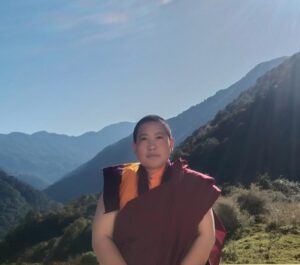
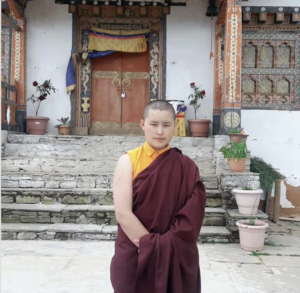
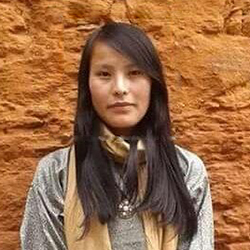
A nunnery has been established, their quarters have been built, and the approach road to the Lhakhang has been constructed. Currently, there are 29 nuns studying under the guidance of Lopenma Uzin Jambay Zangmo and Lopenma Sonam Choki.
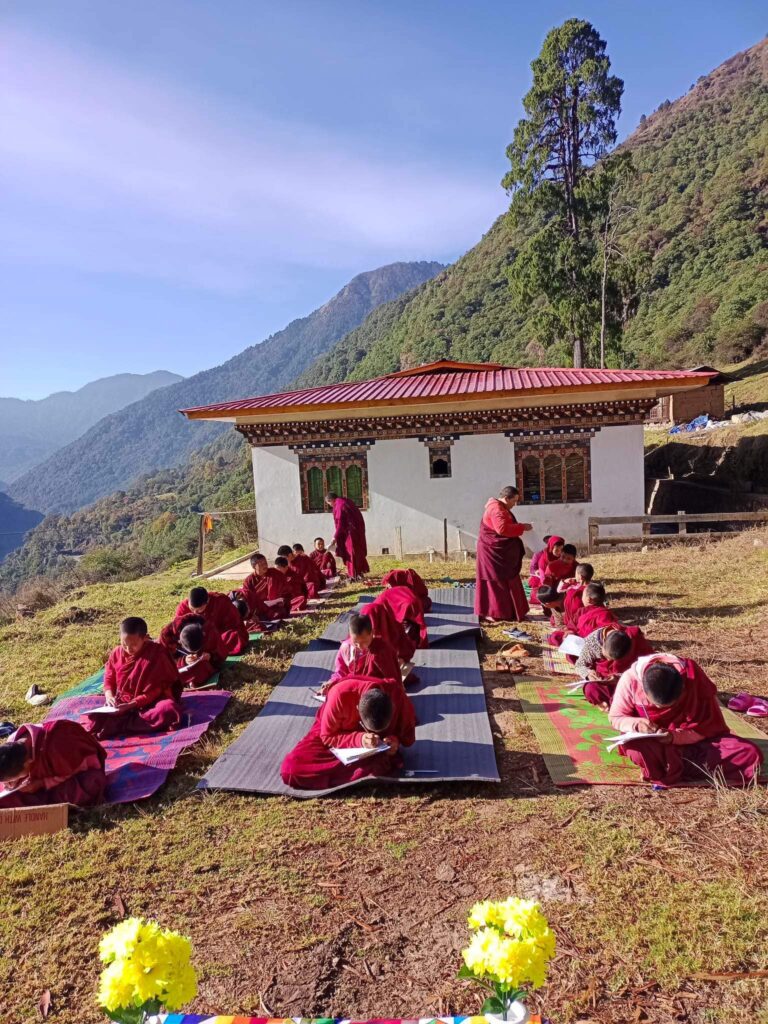
It is wished that over the year, one hundred thousand qualified nuns will graduate from the nunnery as blessed by Guru Padmasambava before and as per the one-hundred-foot prints of dakinis left on a rock during Guru’s visit.
